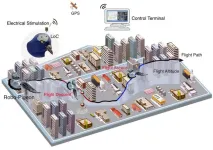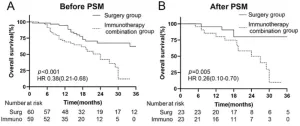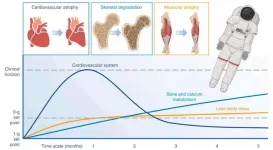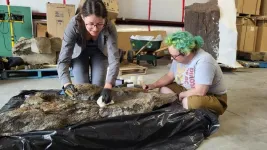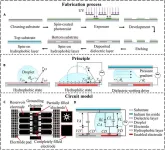DSM operations are expected to increase the negative impact on environmental indicators by up to 13 per cent, a change categorized as having “great” significance, relative to the “without” DSM scenario, the study published in PLOS One said, notably through increased coastal vulnerability, pollution, and biodiversity loss.
“The risks associated with DSM extend well beyond environmental degradation — they pose significant hazards for marine ecosystems, coastal and Indigenous communities, and for businesses, in particular, the insurance industry,” said Dr. Rashid Sumaila, professor at the University of British Columbia’s Institute for the Oceans and Fisheries (IOF) and School of Public Policy and Global Affairs (SPPGA), and senior author of the study.
“The potential liabilities inherent in DSM activities necessitate a reassessment of current insurance models,” said Dr. Sumaila. “Our analysis indicated a surge in risk factors will lead to a large increase in economic risks, with an estimated 11 per cent rise in threats, including contractual violations and loss and profitability risks, which could have major implications for insurers, as they directly impact risk assessment models and industry stability.”
Dr. Lubna Alam, research associate at The University of British Columbia’s Institute for the Oceans and Fisheries, and associate fellow at the Institute for Environment and Development of the National University of Malaysia, first author of the study pointed to recent climate change impacts already disrupting coastal insurance markets, including rising sea levels, more frequent hurricanes, and extreme weather events. “Think, for example, of places like Florida, in the United States, where its coastal environment is increasingly vulnerable to hurricanes, rising sea levels, and flooding. Insurance companies are pulling out of these high-risk areas. If the flood risk in your area surges up by 11 per cent, it would have a chilling effect on insurance companies.
“That’s exactly the kind of warning this 11 per cent increase signals for nature,” said Dr. Alam. “And nature, unfortunately, cannot renegotiate its premiums.”
“We have also seen the unexpected impact of oil and gas catastrophes on the marine environment. The Exxon Valdez leak in Alaska in 1989 had devastating impacts on the local environment, and resulted in Exxon spending billions of dollars on clean-up costs and punitive damages. The Deepwater Horizon well blowout in 2010 in the Gulf of Mexico is considered one of the largest environmental disasters in world history, and continues to impact the area. Again, the economic costs paid by BP have been in the billions, and the environmental and health costs continue to affect the area,” said Dr. Sumaila. “And these are environmental disasters that occurred in large developed countries. How would they impact SIDS, which are much closer to the areas that would see the DSM activities?”
For small island states, climate change is also producing severe financial and economic consequences, which have resulted in greater risk scores, driving coverage higher or making it unavailable. An independent researcher from India, Ms. K. Pradhoshini, a co-author of this study, commented that, “many island nations are already facing reduced participation from private insurers, forcing governments to provide state-backed insurance with limited coverage. In such a scenario, a high-risk score, as observed through our study, can negatively impact a country’s sovereign credit rating, increasing borrowing costs. This makes it harder for small island states to secure international funding for infrastructure and climate adaptation projects.”
“Fisheries and tourism - key economic sectors for many small island states - are also directly tied to environmental stability. If risk scores rise due to climate threats or ecosystem degradation from DSM, businesses may suffer losses, leading to employment instability, discouragement of investment, limitations on financial growth, and economic instability,” said Ms. Pradoshini.
Dr. Sumaila concurs, noting that currently projected plans for DSM are targeted for the Clarion-Clipperton Zone in the Pacific Ocean, one of the richest tuna fishing areas in the world. “Rising ocean temperatures are already causing tuna species to migrate eastward, reducing the catch within the exclusive economic zones (EEZs) of Pacific SIDS, with a potential economic loss of up to $140 million annually by 2050 for these nations. Deep-sea mining activities can create sediment plumes, introduce noise and light pollution, and discharge water with higher concentrations of metals, potentially disrupting tuna habitats and altering their migration patterns, which would have a devastating effect on the sustainability of tuna fisheries and the economic resilience of SIDS.”
The study advocates for a shift toward circular economy strategies, such as enhanced recycling and urban mining, which offer sustainable alternatives to DSM. These approaches could reduce the risk exposure that all parties currently face, by mitigating the environmental and economic uncertainties linked to deep-sea mining operations. “Recently, researchers claim to have developed a process to recover nearly all of the lithium from used electric vehicle batteries for recycling,” said Dr. Sumaila. “This is an example of other technologies that would help meet the growing demand for essential materials while dramatically reducing environmental and social risks.”
“Circular solutions can maximize our resource efficiency, extending the lifecycle of materials and promoting the reuse and recycling of existing stock of metals already in cirulation. This approach will not only decrease the demand for virgin minerals, but also minimizes waste, leading to a substantial reduction in the overall environmental footprint,” Dr. Sumaila concluded.
Deep-sea mining and its risks for social-ecological systems: Insights from simulation-based analyses, was published in PLOS ONE.
--
The UBC Institute for the Oceans and Fisheries (IOF)’s envisions a world where the ocean, freshwater systems, and those dependent on it - from microbes to plankton, fish to marine mammals, and human populations – are healthy and their resources are used sustainably and equitably. With climate change, overfishing, and habitat loss destabilizing vital ecosystems, a transformative shift is needed to avoid a global ecological and economic collapse. Our integrated research programs span the natural and social sciences, including aquatic ecology, economics, zoology, anthropology, sociology, oceanography, marine geochemistry, microbiology, resource management, and international maritime law. Through a combination of research and outreach, we seek to understand and address the overall impacts of our changing global environment on marine and freshwater ecosystems.
Dona Bertarelli Philanthropy is dedicated to fostering a healthy balance between people and nature, with a strong focus on environmental conservation. Through collaborations in advocacy, education, scientific research, technology, and community-driven initiatives, we aim to create lasting positive change that supports the well-being of all life on earth for a sustainable future.
END
